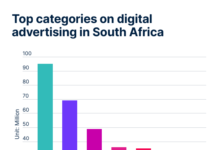Megan Walker, Senior Media Strategist at The MediaShop, says true convenience helps you better serve your customers, and the easier it is for them to get much needed information and complete a purchase with you, the happier they will be.
Consumers want more, better, faster, cheaper and can we have it now please? These recurring themes are popping up more and more in everyday life. After fetching one child from school to drop off at an extra mural recently, he asked to grab something to eat in-between. We drove straight to a local fuel station five minutes away that has a very good mini store and a great selection of ready foods in the forecourt.
As we were pulling up to park, I noticed not one, or two, but three Mr D delivery scooters and their drivers parked while having a break and a chat in between deliveries. At the same time there was a Courier Guy van parked next to me in the parking – clearly the ready foods options were good and the location convenient.
But I digress, as this picture in front of me was hitting home I happened to focus on the store window to the right of the entrance and noticed a number of convenient, on-the-go specials being advertised there. A selection ranging from a pie and energy drink, to a healthier option of sandwich and water were being promoted. The caption on the poster said ‘For the love of convenience’. I regret that I did not take a picture of the scene, because the symmetry of all of these elements together in one frame was not lost on me. I started thinking of just how much I personally have started using ‘convenience channels’ of all shapes and forms more and more.
Today’s consumer continues to favour speed and convenience. No longer just a luxury, speed and convenience have quickly made the transition from being a ‘nice-to-have’ to a ‘need-to-have’ across all industries. Life demands that we get things done at speed and facilitated with ease, and as marketers and service providers take note and meet our increased needs for this, the bar for what qualifies as extra convenience continues to rise.
Smartphone apps have changed the way consumers connect with taxi alternatives, how we make a reservation at a restaurant or even arrange a date. Entertainment can be streamed to a TV or a phone in seconds. Spurred on by banking innovation, consumers favour new technology such as mobile banking apps, peer-to-peer transfer services and online banking — all responses to a consumer base that is perpetually impatient for convenience.
The desire for prepared meals delivered to your door via food delivery apps, or healthy packaged foods that you can purchase in minutes by popping in and out of a store are not the only aspects of convenience food that is seeing growth. Meal kits such as those offered by UCook are also increasingly popular. The gratification of cooking a tasty restaurant quality meal with an easy step by step process with all ingredients supplied in the exact quantities is next level convenience.
The demand for time-saving convenience has made many grocery retailers rethink delivery options. Checkers launched their 60Sixty delivery app and service to limited stores in 2019, but lockdown propelled them to accelerate the roll out.
‘During the pandemic, necessity has truly been the mother of invention,’ said David Cohn GM of IT Shoprite Group. The Group scaled up its e-commerce and delivery services via Checkers Sixty60 and Checkers Food Services, effectively ‘vaulting five years in five weeks’ as it accelerated its e-commerce, virtual voucher and online order fulfilment initiatives. The massive increase in users experienced has also seen the elderly, frail and low-income customers taking to shopping online for the first time.
Innovation for convenience has always been around, there are many examples of progress made over the decades in the name of making our lives easier. Electricity, cars, bikes, moving assembly lines, canned drinks, ready meals, digital cameras, smartphones, portable Wi-Fi and social networking platforms are just a few examples.
But the speed of this innovation has increased disproportionately, spurred on by a pandemic and the need for businesses to pivot fast under the changing circumstances. Brands have had to focus more on ensuring they have a customer centric approach, and while many things can make your business more customer-focused, few are more important than the convenience you offer to consumers.
According to a UK report, ‘Customer engagement – the road to 2020’ (commissioned by West Unified Communications Services) 74% of consumers find it frustrating when customer service is only available during working hours. And nearly half of respondents want more customer service options tailored towards their mobile phones so they can deal with issues when out and about. Consumer expectations around quick and convenient brand responsiveness in general are very high. The favoured acceptable time for customer service responses for each channel are: voice: 1-5 minutes; live chat: 1-5 minutes; social media: 30 mins-1 hour; text/SMS: 30 mins-1 hour; web form: 1-5 minutes and email: 30 mins-1 hour.
In the race for loyalty and share of wallet, convenience has the potential to determine whether your business is surviving, thriving or limping.










